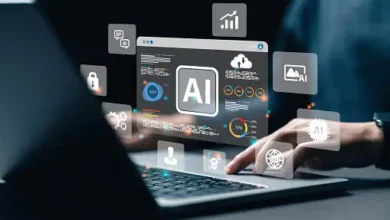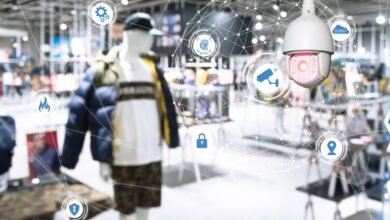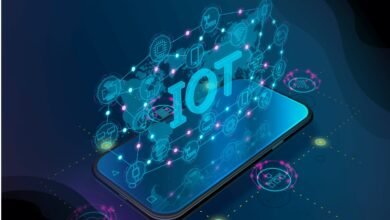How SMEs in Germany Can Leverage IoT for Growth
In this article, we will explore how SMEs in Germany can harness the power of IoT for growth, detailing actionable strategies and real-world applications.

The Internet of Things (IoT) is revolutionizing industries across the globe, and Germany is no exception. For small and medium-sized enterprises (SMEs) in Germany, IoT presents a unique opportunity to drive growth, enhance efficiency, and stay competitive in an increasingly digital world. With Germany being a hub for innovation and technology, SMEs can leverage IoT to optimize operations, reduce costs, and create new revenue streams. In this article, we will explore how SMEs in Germany can harness the power of IoT for growth, detailing actionable strategies and real-world applications.
1. Understanding IoT and Its Relevance for SMEs
What is IoT?
The Internet of Things refers to a network of interconnected devices that collect, share, and analyze data in real-time. These devices, equipped with sensors and software, communicate with each other to automate processes, improve decision-making, and enhance operational efficiency.
Why IoT Matters for German SMEs
Germany is home to over 3.6 million SMEs, which form the backbone of its economy. However, many of these businesses face challenges such as rising operational costs, labor shortages, and increasing competition. IoT offers a solution by enabling SMEs to:
- Automate repetitive tasks.
- Gain actionable insights from data.
- Improve customer experiences.
- Reduce waste and energy consumption.
By adopting IoT, SMEs can level the playing field with larger corporations and unlock new growth opportunities.
2. Key Areas Where IoT Can Drive Growth for SMEs
Smart Manufacturing and Industry 4.0
Germany is a global leader in Industry 4.0, the fourth industrial revolution characterized by smart factories and automation. SMEs in the manufacturing sector can integrate IoT into their production processes to:
- Monitor equipment performance in real-time.
- Predict maintenance needs and reduce downtime.
- Optimize supply chain management.
- Enhance product quality through data-driven insights.
For example, IoT sensors can track machine temperatures and vibrations, alerting operators to potential failures before they occur. This predictive maintenance approach saves costs and ensures uninterrupted production.
Energy Efficiency and Sustainability
Energy costs are a significant concern for German SMEs, especially with the country’s focus on sustainability and the Energiewende (energy transition). IoT can help businesses:
- Monitor and control energy consumption in real-time.
- Automate lighting, heating, and cooling systems based on occupancy.
- Integrate renewable energy sources like solar panels into their operations.
By reducing energy waste, SMEs can lower operational costs and contribute to Germany’s sustainability goals.
Enhanced Customer Experiences
IoT enables SMEs to deliver personalized and seamless customer experiences. For instance:
- Retailers can use IoT-enabled beacons to send targeted promotions to customers’ smartphones.
- Service-based businesses can offer real-time updates and notifications to clients.
- Smart devices can collect customer feedback and preferences, allowing businesses to tailor their offerings.
By leveraging IoT, SMEs can build stronger customer relationships and increase loyalty.
Supply Chain Optimization
Efficient supply chain management is critical for SMEs to remain competitive. IoT can provide end-to-end visibility into the supply chain by:
- Tracking shipments in real-time.
- Monitoring inventory levels and automating reordering processes.
- Ensuring compliance with temperature and humidity requirements for perishable goods.
This level of transparency reduces delays, minimizes losses, and improves overall efficiency.
Remote Work and Collaboration
The COVID-19 pandemic has accelerated the adoption of remote work. IoT can facilitate seamless collaboration by:
- Connecting remote teams through smart devices and platforms.
- Automating routine tasks to free up employees’ time.
- Providing real-time data access to decision-makers, regardless of their location.
For SMEs, this means greater flexibility and productivity.
3. Steps for SMEs to Implement IoT Successfully
Identify Business Needs and Goals
Before investing in IoT, SMEs must identify their specific pain points and objectives. For example:
- Are you looking to reduce operational costs?
- Do you want to improve product quality?
- Are you aiming to enhance customer satisfaction?
By defining clear goals, SMEs can choose the right IoT solutions and measure their impact effectively.
Start Small and Scale Gradually
IoT implementation can be complex and costly. SMEs should start with pilot projects to test the technology and demonstrate its value. For instance:
- A small manufacturer could begin by installing IoT sensors on a single production line.
- A retailer could experiment with IoT-enabled inventory management in one store.
Once the pilot proves successful, the business can scale up the solution across its operations.
Partner with IoT Experts
Many SMEs lack the technical expertise to implement IoT independently. Partnering with IoT providers, consultants, or research institutions can help businesses:
- Choose the right hardware and software.
- Integrate IoT with existing systems.
- Ensure data security and compliance with regulations.
Germany’s strong ecosystem of tech startups and research organizations makes it easier for SMEs to find reliable partners.
Invest in Data Analytics
IoT generates vast amounts of data, but its true value lies in the insights it provides. SMEs should invest in data analytics tools and expertise to:
- Identify trends and patterns.
- Make informed decisions.
- Predict future outcomes.
For example, a logistics company could use data analytics to optimize delivery routes and reduce fuel consumption.
Prioritize Cybersecurity
As IoT devices collect and transmit sensitive data, cybersecurity is a top priority. SMEs must:
- Use encryption and secure communication protocols.
- Regularly update software and firmware.
- Train employees on cybersecurity best practices.
By safeguarding their IoT systems, SMEs can protect their reputation and avoid costly breaches.
4. Real-World Examples of IoT Success in German SMEs
Smart Farming
German agriculture SMEs are using IoT to monitor soil conditions, track livestock health, and automate irrigation. This has led to higher yields, reduced resource consumption, and improved sustainability.
Smart Retail
A small German retailer implemented IoT-enabled shelves that track inventory levels in real-time. This reduced stockouts, improved customer satisfaction, and increased sales.
Smart Logistics
A German logistics SME integrated IoT sensors into its fleet to monitor vehicle performance and optimize routes. This resulted in lower fuel costs, faster deliveries, and reduced emissions.
5. Overcoming Challenges in IoT Adoption
While IoT offers immense potential, SMEs may face challenges such as:
- High initial costs.
- Lack of technical expertise.
- Data privacy concerns.
To overcome these barriers, SMEs can:
- Seek government grants and funding programs.
- Collaborate with industry associations and research institutions.
- Focus on scalable, cost-effective solutions.
The Future of IoT for German SMEs
As IoT technology continues to evolve, its applications for SMEs will expand. Emerging trends such as 5G connectivity, edge computing, and AI-driven analytics will further enhance the capabilities of IoT. By staying ahead of these trends, German SMEs can position themselves for long-term growth and success.
Conclusion
IoT is no longer a luxury reserved for large corporations. For SMEs in Germany, it is a powerful tool to drive growth, improve efficiency, and stay competitive in a rapidly changing business landscape. By understanding the potential of IoT, identifying key areas for implementation, and overcoming challenges, SMEs can unlock new opportunities and secure their place in the digital economy. The time to embrace IoT is now—don’t let your business fall behind.
By adopting IoT, German SMEs can not only survive but thrive in the era of digital transformation. The future is connected, and the possibilities are endless.











